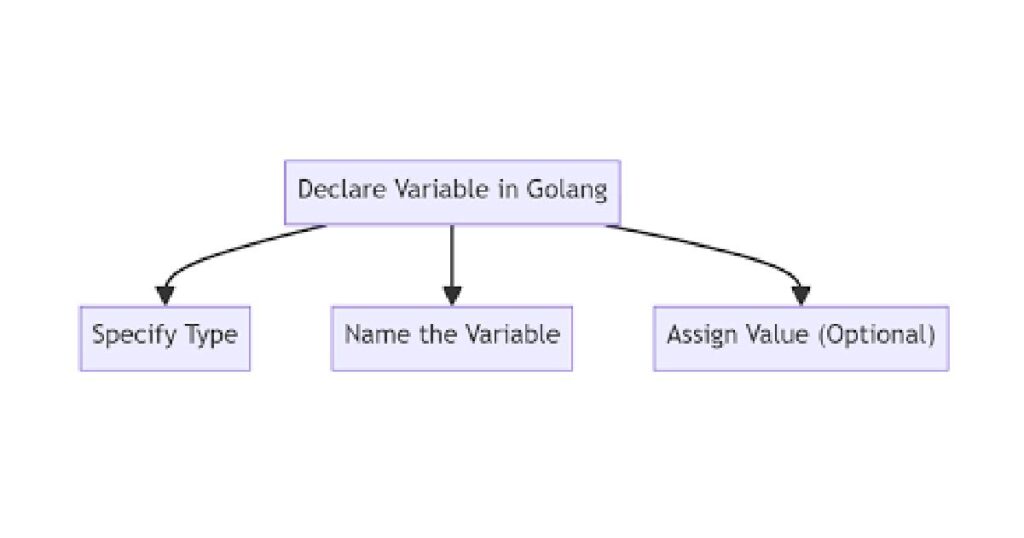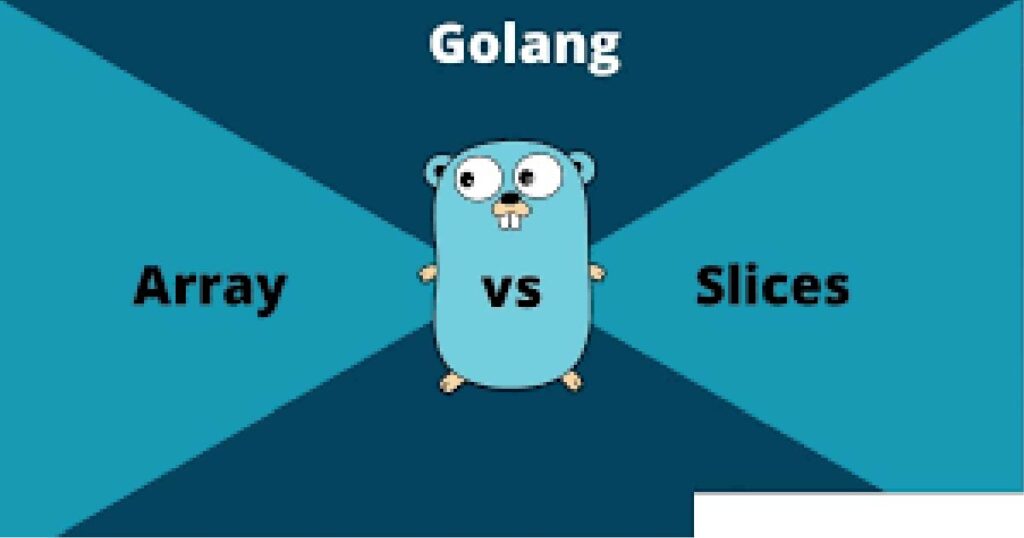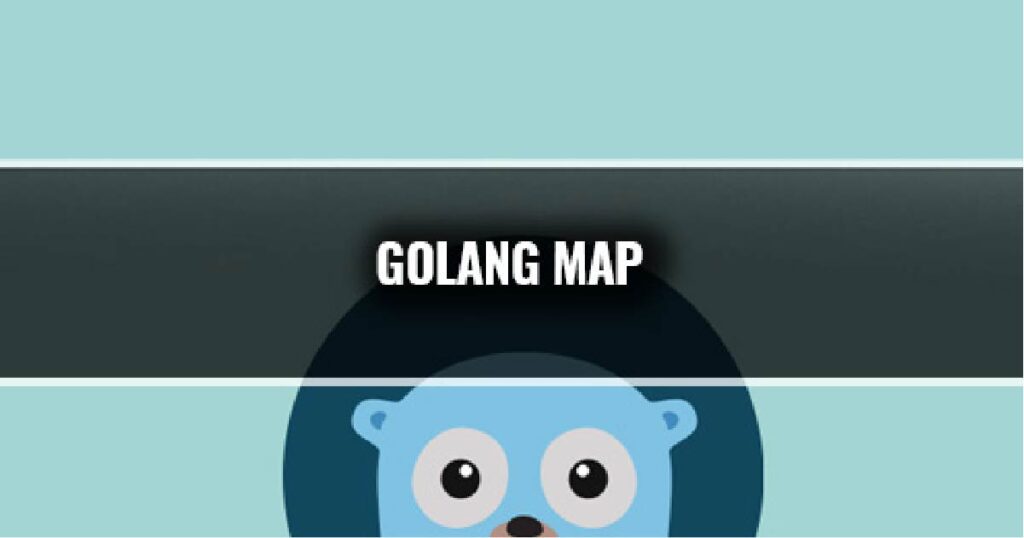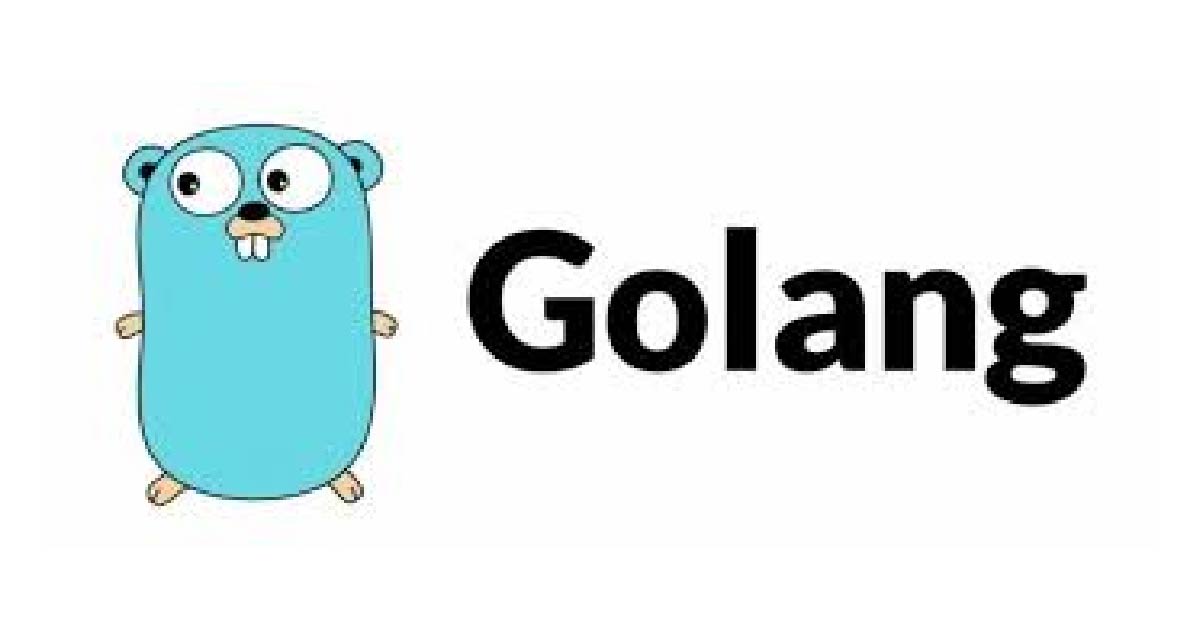Introduction
As Golang continues to be an efficient and versatile choice for code writing in this dynamic landscape of software development, the demand for professionals proficient in the se of Go continues to rise. Aspiring and seasoned developers can use the "Top 50 Golang Interview Questions and Answers in 2024" in this guide as a preparation guide for Golang interviews. The Golang interview questions spans over a wide range of subjects, giving candidates a holistic view of the required skills, features and concepts as well as insights to tackling Golang related questions.
Basics Golang Interview Questions
- Q1: What is Golang and why is it preferred for certain applications?
This is one of the most asked Golang interview questions. The programming language Go, created by Google, is straightforward, effective, and productive with an emphasis on readability and user-friendliness. Go is most suitable for high-level parallelism applications such as web servers and distributed systems. This is because of its superior concurrent programming capabilities. Go is perfect for scalable and effective concurrent code because of its strong type system, garbage collector, and concise syntax.
- Q2: Can you explain the basic syntax of Golang?
Key components of Go's syntax are declarations of packages, import statements, functions, variables, constants, control flow statements, arrays and slices, and structures. The syntax of Go is clear and easy to understand making it famous for being readable and straightforward. This makes it simple for developers to write and maintain code.
- Q3: How does variable declaration work in Golang?

Go permits the declaration of variables via the var keyword or the abbreviated variable declaration:=. Likewise, Go accepts constants, multiple variables, and zero values. Variable names can have underscores, numbers, or other characters, but they always have to begin with a letter. Additionally, it promotes meaningful, short variable names that improve readability and type inference, resulting in more concise and less redundant code.
- Q4: What are slices in Golang and how do they differ from arrays?

Built on top of arrays, Go's slice is a dynamic and effective substitute for arrays. Slices can expand or contract while being executed, in contrast to arrays, which have a set size. They are used when a dynamic, resizable collection is required and are declared without a size specification. Slices only need a reference to the underlying array, making them more efficient when passed to functions.
- Q5: How do you manage errors in Golang?
Error handling, a key component of the Go language, uses the errors package and interface. Any type can use the built-in error type that it contains. Error-prone functions usually return a type error, but you can define your own custom error types. Errors propagate up the call stack, and panics are handled and caught with defer and recover statements.
- Q6: What is a map in Golang and how is it used?

Like dictionaries, Golang's map is an integrated data structure that holds a set of key-value pairs. Created using the make function, maps are used for tasks like counting elements, caching values, and representing relationships.
- Q7: Can you explain the concept of a package in Golang?
packages in Go, enable modularity and reusability in Go programs by organizing and encapsulating source code. They are made up of one or more Go source files located in a single directory, as indicated by package declarations. The initial character of an identifier determines its visibility, and code from other packages can be imported using import statements.
- Q8: What is the difference between 'var' and ':=' in Golang?
When a variable needs to be declared in Go, two methods are used: var is used for explicit declarations at the package or function level, and := is used for short declarations inside a function. Whether to explicitly specify the type and the scope of the variable determine which of these syntaxes to use.
- Q9: How does Golang handle type inference?
Golang interview questions such as this is very common. In addition to type inference, which makes variable declarations simpler, Go has a static type system that determines variable types at compile time. Important features are function return types, type inference in composite literals, explicit variable declaration (var), and short variable declaration (:=). This balances conciseness and clarity, reducing boilerplate code and ensuring type safety during compilation.
- Q10: Explain how to write a basic Go program with an example.
Creating a file with the.go extension, defining a main function, and utilizing the fmt package for input/output are the components of a basic Go program. The main function, import statement, and package declaration are all included in the code. The go run command can be used to launch the program.
Golang Interview Questions on Data Structures and Algorithms
- Q11: How are linked lists implemented in Golang?
Struct types are used by Go (Golang) to implement linked lists, representing the nodes in a list. A data element and a reference to the node after it are contained in every node. The linked list is represented by the LinkedList struct, and a new node with the supplied data is added using the Append method. The linked list's elements are printed using the Print method.
- Q12: Can you describe how to sort an array in Golang?
Golang interview questions on data structures and algorithms like this is to be expected. A common library for sorting slices and arrays is the sort package in Go. It supports various sorting algorithms and allows custom sorting for user-defined types. Use the sort function for custom types or descending-order sorting.sort function in addition to a personalized sort implementation.interface of the interface. You can modify the Less method to specify unique sorting standards.
- Q13: What are the interfaces in Golang and how are they implemented?
In Go, interfaces are types that specify method signatures, allowing behavior without specifying implementation. When a type implements every method declared by an interface, it implicitly satisfies that interface, encouraging polymorphism and enabling code to work with various types that share common behaviors. An empty interface represents any type with zero methods, and interfaces are statically satisfied at compile time.
- Q14: Explain the use of trees and graphs in Golang.
In Go, trees and graphs—basic data structures in computer science—are employed to address a variety of issues. Trees are data structures that exhibit hierarchical relationships and are utilized for operations such as traversals and balancing. They are composed of nodes connected by edges. Graphs, which are used in social networks and maps, are collections of nodes connected by edges. Libraries like gonum/graph can be used for advanced graph-related tasks.
- Q15: How do you implement a queue and a stack in Golang?
Slices and linked lists can be used to implement queues and stacks in Go (Golang). Simple examples include using a slice to create a stack and to enqueue and dequeue elements. Since these implementations lack thread safety, more synchronization techniques might be required.
- Q16: Discuss the implementation of hash tables in Golang.
Golang interview questions are never complete without a question like this. Go implements hash tables, which are data structures with distinct key-value pairs, using the built-in map type. Based on their keys, the map type effectively inserts, removes, and retrieves values. Go's implementation of maps as hash tables offers quick average-case time complexity for operations. A map can be created, key-value pairs can be inserted, values can be retrieved, updated, and deleted using fmt, as demonstrated in the example.To print the results, use println statements.
- Q17: How would you perform a binary search in Golang?
In Go, binary search is a quick and effective way to locate desired values inside a sorted array. It searches using a straightforward recursive function and returns the index of the target value. With an O(log n) time complexity, the algorithm outperforms linear search for large sorted datasets.
- Q18: What are the common algorithms used for string manipulation in Golang?
Concatenation, substring extraction, len function, strconv package for string conversion, strings package for searching, replacing, splitting, and joining, and regexp package for regular expressions are just a few of the string manipulation packages available in Golang.
- Q19: Can you demonstrate implementing a recursive function in Golang?
The factorial of a non-negative integer, represented by the symbol n!, is computed by the recursive function in Go. It guarantees a convergent recursion and prevents infinite recursion by having a base case of 1 and a recursive case of n! multiplied by (n-1)!.
- Q20: Discuss dynamic programming with a Golang example.
An optimization method called dynamic programming divides a problem into smaller subproblems and solves each one just once to cut down on computations. For overlapping subproblems and ideal substructures, this is helpful. The Fibonacci sequence, for instance, can be solved dynamically in Go by storing and reusing solutions through memoization, which lowers time complexity and eliminates needless computations.
Golang Interview Questions on Functions and Methods
- Q21: What is a method in Golang and how does it differ from a function?
Functions and methods are areas where common areas for setting Golang interview questions. A function in Go is a stand-alone function that does not have a receiver, whereas a method in Go is a function connected to a particular type. Methods can be called on instances of that type because they are defined with a receiver. They have a receiver before the function name and are declared with the func keyword.
- Q22: Explain the concept of method receivers in Golang.
Receivers of methods in Go ahead and create user-defined type methods. Value receivers and pointer receivers are the two varieties. Pointer receivers remain outside the method, whereas value receivers alter data inside it. Understanding these distinctions is crucial.
- Q23: How do you pass a function as a parameter in Golang?
Go allows passing a function as a parameter to another function by specifying the function type as the parameter type. Because it enables higher-order functions to modify their behavior in response to passed functions, this flexibility encourages code reusability and modularity.
- Q24: What are variadic functions in Golang?
A variadic function in Go can take a variable number of arguments; its ability to take zero or more values is indicated by the type of the final parameter. Functions that handle variable input parameters, like sums or averages, can do so thanks to this feature.
- Q25: Can you explain anonymous functions and closures in Golang?
In Go, anonymous functions and closures are concepts that offer flexibility and concise ways to work with functions. An anonymous function can be returned from other functions, assigned to variables, and passed as arguments. It is defined inline. Even after execution, closures maintain their state and refer to variables external to the body. In Go, both tools are effective.
- Q26: How do interfaces work with functions in Golang?
Interfaces are used by Go (Golang) to define method signatures for a type, enabling interfaces to be passed as parameters to functions. This allows for polymorphism and interchangeability of different types. The Shape interface, for instance, declares a single method that can be implemented by both Rectangle and Circle types.
- Q27: Discuss the use of defer statements in functions.
This is also one of the most asked Golang interview questions. The defer statement in Go is used to call a function later on in the program's execution, usually following the completion of the function that surrounds it. It is used for cleanup operations, function call logging, and unlocking mutexes. Arguments to the deferred function are evaluated when they are encountered, not when the function is run.
- Q28: What are pointers in Golang and how are they used with functions?
A pointer in the Go programming language is a variable that holds the memory address of another variable, enabling functions to alter values that are not within their scope. They are useful for efficient memory management and enabling functions to modify variables outside their scope. Nevertheless, Go handles memory allocation and deallocation automatically and lacks explicit pointer arithmetic.
- Q29: Explain how to create and use custom types in functions.
In Go (Golang), custom types allow you to create new types based on preexisting ones, adding more functionality, readability, and clarity. They can be used in functions to make code more expressive and self-documenting. Code maintenance, improved function signatures, bug prevention, and clarity of code are among the advantages.
- Q30: Discuss error handling within Golang functions.
Error handling is a core component of the robust and dependable programming language Go (Golang). It uses an explicit return of error values and an error interface. Functions that generate errors usually return a non-nil error value. Errors are values that implement the error interface. By using the Error() method on particular types, custom error types can be made.
Golang Interview Questions on Concurrency
- Q31: What is concurrency and how is it handled in Golang?
Go (Golang) concurrency is a first-class citizen, enabling effective and user-friendly concurrent programming. Two essential ideas are channels, which are communication primitives that enable goroutines to communicate and synchronize their execution, and goroutines, which are lightweight threads controlled by the Go runtime. Golang concurrency has advantages in terms of performance, safety, simplicity, and scalability. Concurrency is a good subject area for Golang interview questions.
- Q32: Explain goroutines in detail.
Go's goroutines are thin, concurrent threads that allow for concurrent operations without the drawbacks and complexity of other programming languages' threads and parallelism. The go keyword and a function call are used to create them, enabling the simultaneous execution of multiple goroutines. The Go scheduler controls goroutines, which can communicate with one another through channels to allow for synchronization.
- Q33: How do channels facilitate communication in concurrent programming in Golang?
In Go (Golang), channels are a fundamental component that make it easier for goroutines to communicate and synchronize during concurrent programming. In order to avoid race situations, they guarantee synchronized communication and restricted access to shared data. The chan keyword, which specifies the kind of data to be carried, is used to create channels using the make function. Sending and receiving data is done with the <- operator, and data is blocked until the recipient is prepared to receive it.
- Q34: What is a deadlock in Golang concurrency?
When two or more goroutines are stuck indefinitely while awaiting the release of a resource from one another, this is known as a deadlock in Go concurrency. To avoid deadlocks, follow good practices such as avoiding circular dependencies, using a default clause for channels and select, careful use of mutexes, and avoiding unbuffered channels.
- Q35: Can you compare goroutines with threads?
In Go, the concurrency primitives goroutines and threads are made for simultaneous execution. In contrast to threads, which are heavier and need special thread management, goroutines are lightweight and controlled by the Go runtime. Although they can be used for both parallel and concurrent programming, they may use up more system resources. Threads, on the other hand, are a lower-level abstraction managed by the operating system, offering more control but scalability challenges.
- Q36: How do you manage state in concurrent applications in Golang?
Golang interview questions like this requires for one to explain a little in depth. Managing state in concurrent applications is crucial for writing robust programs. Go uses a number of methods as well as industry best practices to manage state in a concurrent environment. These include the use of read-write mutexes, channels for synchronization and communication, atomic operations for basic operations, immutable data structures, mutexes to protect critical sections, avoiding global state, and select statements with timeouts to keep goroutines from being blocked indefinitely.
- Q37: Discuss select statements in Golang concurrency.
The select statement in Go is a powerful tool for concurrent programming, allowing goroutines to wait on multiple communication operations simultaneously. It permits non-blocking communication and keeps goroutines from blocking indefinitely. Several case statements may be included in the select statement, which blocks until at least one operation is complete. Additionally, non-blocking actions, default clauses, and random selection are supported.
- Q38: What are buffered and unbuffered channels in Golang?
Go uses channels for communication and synchronization between goroutines. Unbuffered channels allow synchronization between sender and recipient but have no storage capacity. Buffered channels support asynchronous communication and have a capacity limit. While buffered channels enable some asynchrony and effective handling of data bursts, unbuffered channels guarantee instantaneous data transmission.
- Q39: How do you implement a worker pool using goroutines and channels?
In Go, a worker pool is a concurrency pattern in which tasks are processed from a shared queue by a fixed number of worker goroutines. This helps control resource usage and efficiently handle large tasks without overwhelming the system. The primary function shows how to set up a job dispatcher, load jobs into it, and launch the dispatcher to handle the jobs by utilizing the worker pool.
- Q40: Explain the race condition and how to avoid it in Golang.
When two or more goroutines access shared data concurrently and at least one of them modifies the data, this is known as a race condition in Go (Golang). Because there is no guarantee on the order of execution, this may result in unpredictable program behavior. Mutexes, atomic operations, channel communication, avoiding shared mutable state, and using Go tools like go run -race to detect data races during development are some ways to prevent race conditions.
Golang Interview Questions on Advanced Topics
- Q41: Discuss the garbage collection mechanism in Go.
A key component of the Go language's runtime system, garbage collection ensures effective memory management and guards against memory leaks. It synchronizes with application threads and makes use of multiple CPU cores through the use of a concurrent and parallel garbage collector. Three phases comprise the garbage collector's operation: the Mark, Sweep, and Scavenge phases. It can be manually triggered and is activated by memory pressure. Developers can optimize code and change garbage collector parameters with the GODEBUG environment variable.
- Q42: Discuss package management in Golang.
Introduced in Go 1.11, the Go Modules system handles versioning, reproducibility, and dependency management, making package management in Go projects easier. Compared to the GOPATH-based method, it enables developers to specify and manage dependencies more efficiently. Module initialization, versioning, version querying, dependency management, and a vendor directory for repeatable builds are important ideas.
- Q43: What are some of the new features in the latest version of Golang?
- Language changes
- Tool improvements
- Standard library additions
- Compiler and garbage collector improvements
- Security updates
- Q44: How do you write unit tests in Golang?
Writing unit tests for code is made easier with Go's straightforward but robust testing framework. To write tests, use the testing package, define test functions, use helper functions, create a test file with a name ending in _test.go, and run tests with the go test command. Use the flag package in your tests if any part of your code depends on command-line flags.
- Q45: Explain how reflection works in Golang.
Go's reflection feature lets an application inspect its internal structure—including the kinds of variables and functions—while it's running. Type and Value are the two primary types introduced by the reflect package. With interface{}, reflection is frequently utilized to work with values of unknown types. It is commonly used with struct tags to extract metadata associated with struct fields.
- Q46: What are the best practices for writing efficient Golang code?
Golang interview questions on best practices is no cause for alarm. Good coding practices, knowledge of language features, and well-considered design choices are necessary for writing efficient Go code. Use of the go vet tool, code profiling, allocation minimization, avoidance of global variables, optimization for loops, value receiver selection, concurrent programming, preference for composition over inheritance, benchmarking and testing, code simplification, code reviews, adherence to Go coding conventions, updating to the most recent version, documentation of code optimizations, and nil value checking are some examples of best practices for writing efficient Golang code.
- Q47: Discuss Golang’s support for web development.
Golang is a popular web development platform due to its simplicity, efficiency, and performance. Go's standard library includes the net/http package, which supports HTTP servers and clients. It supports various web frameworks, including Gin, Echo, and Beego. Go also supports template libraries, database access, middleware support, web sockets, static file serving, RESTful APIs, security, concurrency, scalability, testing, Docker support, and a community of resources.
- Q48: How do you optimize performance in Golang applications?
Optimizing performance in Golang applications involves a combination of best practices, profiling, and utilizing language features effectively. Code profiling, memory allocation minimization, value types, loop and iteration optimization, concurrency, appropriate data structure selection, avoidance of global state, string operation optimization, caching, compile-time optimization, limiting the creation of Goroutines, benchmarking, knowledge of Golang features, and frequent dependency updates are some of the strategies used.
- Q49: What are the best tools for debugging Golang code?
Go's profiling tools, memory allocation reduction, loop optimization, avoidance of global variables, use of value receivers, testing package utilization, garbage collection pressure reduction, string optimization, concurrent programming, HTTP handler optimization, database interaction optimization, production profile, avoid reflection, use of efficient data structures, code generation, caching of computation results, load testing, containerization of the application, updating dependencies, and JSON marshaling optimization are some strategies to improve performance in Go applications.
- Q50: Discuss cross-compilation with Golang.
Eding our Golang interview questions and answers with this question is no surprising. The process of compiling a Go program on one architecture and creating an executable that can run on another is known as cross-compilation in the language. Building binaries for different platforms without changing development environments is made possible by this useful feature. Important features of cross-compilation include build tags, cross-compilation in Makefiles, using gox for multiple platforms, supported platforms, standard library support, CGO_ENABLED, and testing cross-compilation.
Conclusion
The top 50 Golang interview questions in this article serves as a means to comprehend the basics and complex concepts and features of Golang, making it a crucial piece to both novices and seasoned professionals. The comprehension of concepts like goroutines, channels, interfaces, error handling, reflection, garbage collection, and concurrent programming should be a priority for candidates. These Golang interview questions are not just for professionals going for interviews but also serves as a tool for continuous learning and improvements.



